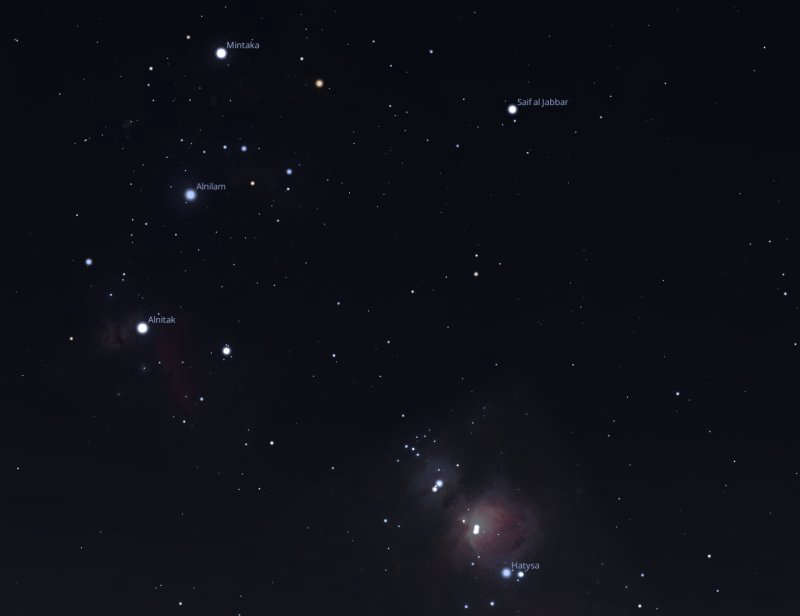
Monday 18th to Sunday 24th November 2024
If it's a clear evening, Wednesday 20th is when it's all happening next week. If you look towards the south south west around 8pm, Saturn will be an easy target to spot. Aiming a telescope towards the planet will reveal the shadow of Saturn's moon Titan as it passes in front of the planet. The transit begins a little before 8 o'clock and will be all over by 11 o'clock.


When you've had enough of Titan, take a look towards the north east and a 70%-lit waning gibbous Moon will be rising above the horizon at 9pm, with Mars just below and to the right of it.

Further right, towards the east, will be the constellation of Orion, with Jupiter above it. Orion is great for teaching astronomy, with lots of interesting things to see. Betelgeuse is a great example of a giant red star, while on the opposite side of the constellation, Rigel is a much younger star that appears to have a blueish tint because it is much hotter.

If you still have your telescope out, the Orion Nebula (Messier 42) is a stunning target that can be found half-way down the "sword" of Orion. The nebula's gas, where stars are being born, is around 1600 light years away, so if you look at it on Wednesday evening, you will be seeing the gas how it was 1600 years ago because its light has taken that long to reach us!

The best pass of the International Space Station next week occurs at 6.16pm on.....guess when.....Wednesday 20th, when it will appear in the west and spend about 4 minutes travelling almost directly overhead before disappearing towards the east.
www.starsoversomerset.com
Screenshots courtesy of Stellarium
Copyright Adrian Dening and Radio Ninesprings 2024

 Winter Coat Scheme
Winter Coat Scheme
 Recycling
Recycling
 Ilminster Local Plan
Ilminster Local Plan
 Hate Crime
Hate Crime
 False Fire Alarms
False Fire Alarms
 Dog DNA
Dog DNA








